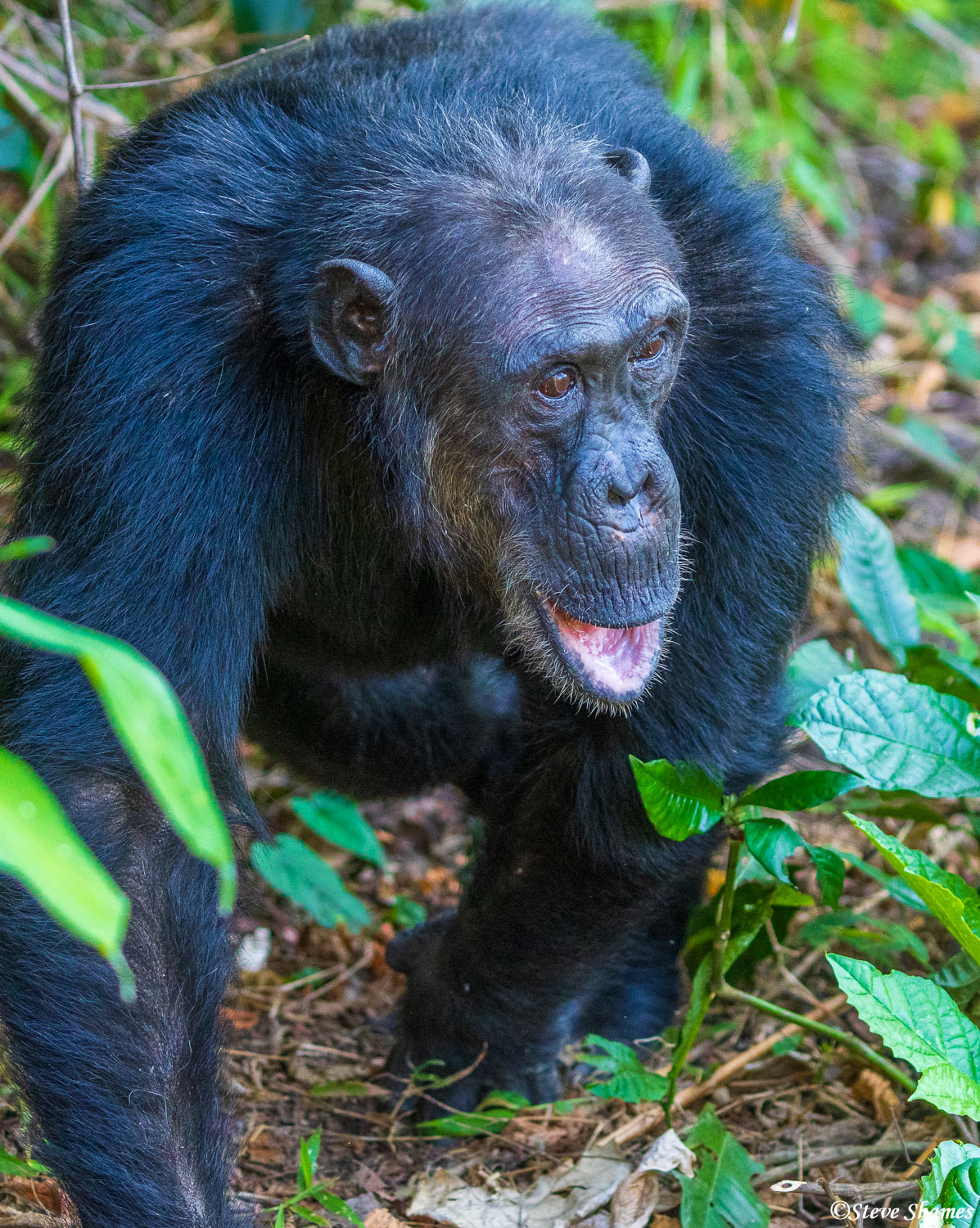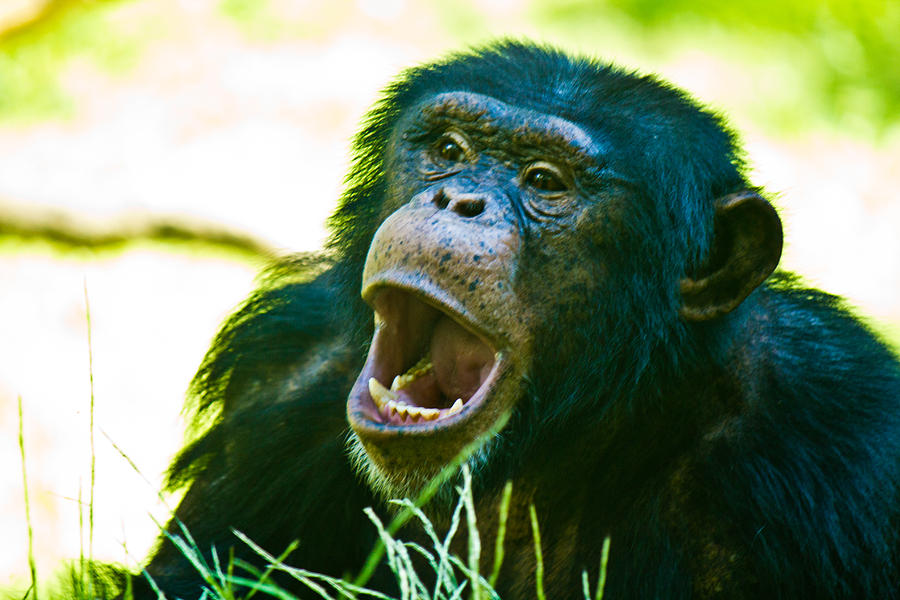Tiger Yelling At Chimp: The Untold Story Behind This Wild Encounter
You’ve probably stumbled upon some wild stories on the internet, but have you ever heard about a tiger yelling at a chimp? It’s not just another viral video or clickbait headline—it’s a fascinating tale that dives deep into the animal kingdom’s unexpected interactions. This isn’t just about two animals having a little spat; it’s about understanding the dynamics of wildlife, territorial instincts, and the complexities of animal behavior. So, buckle up because we’re about to take you on a journey through the jungle where tigers and chimps collide.
Now, you might be thinking, why should I care about a tiger yelling at a chimp? Well, this story is more than just a random encounter. It sheds light on how animals communicate, their hierarchies, and the delicate balance of ecosystems. Whether you’re a wildlife enthusiast, a curious mind, or just someone who loves a good animal drama, this article will give you the scoop you didn’t know you needed.
Before we dive into the meat of the matter—pun intended—let’s set the stage. Imagine a dense jungle where every creature has its role to play. Tigers are apex predators, and chimps are intelligent primates. When these two worlds collide, sparks fly. So, let’s explore the fascinating world of tiger-chimp interactions and uncover the truth behind the roar and the hoot.
Read also:Judith Kliban The Revolutionary Cartoonist Who Redefined Humor
What Happens When a Tiger Yells at a Chimp?
Let’s get down to business. When a tiger yells at a chimp, it’s not just a random outburst. Tigers have a specific way of communicating, and their roar is not something to mess with. It’s a territorial signal, a warning, and sometimes even a display of dominance. Imagine being a chimp and hearing that guttural roar—it’s enough to send shivers down your spine. But chimps aren’t exactly pushovers either.
Understanding Tiger Communication
Tigers use a variety of sounds to communicate, and their roar is one of the most powerful tools in their arsenal. This roar can travel miles and serves as a way to mark territory, warn rivals, and even attract mates. When a tiger yells at a chimp, it’s usually because the chimp has ventured too close to its turf. But here’s the kicker—chimps aren’t always intimidated. Sometimes, they stand their ground and even retaliate.
Chimp Behavior in the Face of Danger
Chimps are no strangers to danger. They’ve faced predators like leopards and crocodiles, so a tiger isn’t exactly their first rodeo. When faced with a roaring tiger, chimps often use group tactics to protect themselves. They hoot, scream, and sometimes even throw objects to intimidate the predator. It’s a fascinating display of teamwork and intelligence.
How Do Chimps React to Tiger Roars?
When a tiger roars, chimps have a few options. They can flee, hide, or confront the predator. Most of the time, they choose the latter. Chimps are known for their problem-solving skills, and they use these skills to assess the situation. If the tiger is too close, they might retreat, but if they feel safe, they’ll stand their ground. It’s like a game of chess in the wild, where every move counts.
The Science Behind Tiger-Chimp Encounters
Now, let’s talk science. Studies have shown that tiger-chimp encounters are rare but significant. These interactions provide valuable insights into animal behavior and ecology. Scientists believe that understanding these encounters can help us better protect both species and their habitats. For instance, if we know where tigers and chimps are most likely to cross paths, we can create buffer zones to minimize conflicts.
What Do Experts Say?
Experts in the field of wildlife biology have weighed in on tiger-chimp encounters. According to Dr. Jane Goodall, renowned primatologist, “Chimps are incredibly adaptable and resilient. When faced with a tiger, they use their intelligence and social bonds to survive.” Similarly, tiger conservationists emphasize the importance of protecting tiger habitats to reduce human-wildlife conflicts.
Read also:Hindi Open Y A Comprehensive Guide To Understanding And Mastering The Concept
Historical Encounters Between Tigers and Chimps
Believe it or not, tiger-chimp encounters have been documented for centuries. Ancient texts and folklore from regions where both species coexist often mention these clashes. Some cultures even view these encounters as symbolic, representing the balance of nature. These stories remind us that humans aren’t the only ones with rich histories and traditions.
Notable Cases of Tiger-Chimp Conflicts
- In 2010, a tiger was caught on camera roaring at a group of chimps in a national park. The chimps responded by throwing sticks and stones, successfully driving the tiger away.
- In 2015, researchers observed a tiger stalking a lone chimp. The chimp managed to escape by climbing a tree and alerting its group.
- In 2018, a viral video showed a tiger and a chimp locked in a tense standoff. The video went viral, sparking discussions about wildlife conservation.
The Role of Conservation in Tiger-Chimp Dynamics
Conservation plays a crucial role in maintaining the delicate balance between tigers and chimps. As human populations expand, natural habitats shrink, forcing animals to compete for resources. This competition can lead to more frequent encounters between species that wouldn’t normally interact. By protecting wildlife corridors and promoting coexistence, we can reduce conflicts and ensure the survival of both tigers and chimps.
How Can You Help?
There are several ways you can contribute to wildlife conservation efforts. You can donate to reputable organizations, volunteer for conservation projects, or simply spread awareness. Every little bit helps, and together, we can make a difference. Remember, the survival of tigers and chimps is not just about them—it’s about the health of our planet as a whole.
Tiger vs. Chimp: Who Would Win?
Let’s face it—we all want to know who would win in a hypothetical tiger-chimp battle. While it’s impossible to predict the outcome of such an encounter, we can make some educated guesses. Tigers are powerful predators with sharp claws and teeth, while chimps are intelligent and resourceful. If it came down to a fight, the tiger would likely have the upper hand, but the chimp’s cunning and group tactics could make things interesting.
Factors That Could Influence the Outcome
- Terrain: If the encounter happens in dense foliage, the chimp might have an advantage.
- Numbers: Chimps are social animals, so they often travel in groups. A lone tiger might think twice before taking on a whole troop.
- Experience: Both species have evolved to survive in their respective environments. Their experiences and instincts play a significant role in determining the outcome.
Lessons We Can Learn from Tiger-Chimp Encounters
Tiger-chimp encounters teach us valuable lessons about coexistence, adaptation, and resilience. In a world where habitats are shrinking and species are struggling to survive, these lessons are more important than ever. By studying these interactions, we can gain insights into how to protect biodiversity and promote harmony between humans and wildlife.
Applying These Lessons to Our Lives
So, how can we apply these lessons to our daily lives? For starters, we can practice empathy and understanding. Just as tigers and chimps find ways to coexist, we can learn to live in harmony with our fellow humans and the environment. We can also support conservation efforts and advocate for policies that protect wildlife and their habitats.
Conclusion: Why This Story Matters
In conclusion, the story of a tiger yelling at a chimp is more than just an interesting anecdote. It’s a reminder of the intricate web of life and the importance of preserving it. By understanding tiger-chimp dynamics, we can gain a deeper appreciation for the natural world and our place in it. So, the next time you hear about a tiger roaring at a chimp, remember that it’s not just noise—it’s a message worth listening to.
Now, it’s your turn. Share this article with your friends, leave a comment, or explore more content on our site. Together, we can make a difference and ensure that stories like this continue to inspire and educate. Remember, every action counts, and every voice matters.
Table of Contents
- Tiger Yelling at Chimp: The Untold Story Behind This Wild Encounter
- What Happens When a Tiger Yells at a Chimp?
- Understanding Tiger Communication
- Chimp Behavior in the Face of Danger
- How Do Chimps React to Tiger Roars?
- The Science Behind Tiger-Chimp Encounters
- What Do Experts Say?
- Historical Encounters Between Tigers and Chimps
- Notable Cases of Tiger-Chimp Conflicts
- The Role of Conservation in Tiger-Chimp Dynamics
- How Can You Help?
- Tiger vs. Chimp: Who Would Win?
- Factors That Could Influence the Outcome
- Lessons We Can Learn from Tiger-Chimp Encounters
- Applying These Lessons to Our Lives
- Conclusion: Why This Story Matters
Unlock The Power Of The Button L3 Xbox – Your Ultimate Gaming Advantage
Nathan Fillion How Tall: The Inside Scoop On The Actor's Height And More!
Khatrimaza.shop: Your Ultimate Destination For Trendy And Affordable Fashion

Yelling Chimp Mahale Mountains National Park, Tanzania, Africa

Yelling Chimp Photograph by Jonny D

Wind me up! £2.50 Flying Tiger Copenhagen